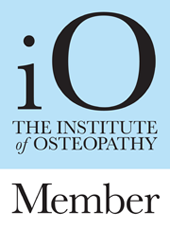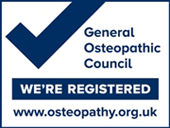Sports Injuries
Osteopathy focuses on the functionality of the body as a whole. As such osteopaths are ideally placed to facilitate recovery from both acute and recurrent sports injuries, improving overall performance along the way.
Sports injuries are often the result of poor joint movement. When joints are moving well, the demand on the muscles and other soft tissues is far less. Recovery from symptoms such as muscle spasm, muscle strains and ligament sprains can be sped up by increasing local joint movement and reducing the workload on affected structures.
Shoulder pain
Neck and back problems can sometimes manifest in and around the shoulder region. When a problem is from the shoulder joint itself, irritation of the tendons (impingement syndrome / tendonitis), inflammation of the fluid-filled sac that protects the tendons (bursitis) and traumatic episodes involving the rotator cuff muscles (e.g. supraspinatus tear) are all common. Each of these examples can cause sharp pains, gnawing aches and limited movement at the shoulder complex. This lack of movement results in tender restrictions within the muscles, further restricting movement and placing extra demand on the opposite shoulder and neck. Osteopaths release muscular restrictions and encourage normal joint motion so as to improve pain and allow normal movement again.
Tennis & Golfer’s elbow
These conditions involve pain and tenderness around the outer edges of the elbow joint, occurring when insertions of the wrist and forearm muscles at the elbow pull at the bone and cause inflammation. Ice and anti-inflammatories can help, however in most instances pain persists due to overuse of the muscles during work and leisure time. By improving the range of movement in the wrist, shoulder and general spine, osteopaths can positively affect the tension at the muscle insertions, allowing the inflammation to resolve. This can help to prevent the need for a steroid injection.
Wrist strain (tenosynovitis)
Overuse of the forearm muscles causes the tendons (the extension of a muscle which attaches it to bone) and their encasing sheaths to become inflamed. As a result the gliding movement of the tendon in its sheath becomes difficult. Symptoms include aching, tenderness and mild swelling of the elbow, wrist, hand or thumb. By improving movement in neighbouring joints, osteopaths reapportion the workload throughout the whole upper limb.
Back pain
Sports involving twisting and turning at pace (e.g. diving, football, golf, karate, rugby and tennis) can put a strain through the back. This might not be a problem if the joints are supple and muscles relaxed. However certain lifestyles cause mid-back stiffness, increasing the workload and vulnerability of the lower back. Osteopaths aim to apportion these loads evenly by improving the range of movement at each level of the spine, minimising the occurrence of a joint or disc strain.
Hamstring & Groin strain
The hamstring muscle group (3 posterior thigh muscles responsible for hip extension and knee flexion) are susceptible to injury as they are weaker than their counterparts, the quadriceps (4 anterior thigh muscles responsible for hip flexion and knee extension). Any imbalance in the hip, knee or pelvis can cause tears anywhere along the length of these muscles, often occurring as the leg is decelerating (e.g. after kicking a football), or when the leg is suddenly straightened (e.g. as a sprinter sets off). Osteopaths address signs of pelvic imbalance and previous knee or ankle injuries that may put extra strain on the hamstrings. Very often a muscle strain is not in isolation and can be related to an underlying functional issue.
Knee pain
Knee pain is often easy to treat and is not always related to arthritis. Subtle imbalances within the hip and foot cause a rotational force at the knee, resulting in pain and inflammation of the tendons and menisci (cartilage). In addition, poor running technique or walking gait can irritate the soft tissues of the knee. Surgery is only required in specific circumstances. Osteopaths can help in many instances by working on the different structures of the knee itself and resolving any imbalances at the neighbouring joints of the lower limb.
Shin splints
Shin splints are a common overuse running injury resulting from training errors such as rapidly increased mileage and poor footwear. Symptoms include pain and bruising at the front of the shin resulting from inflammation and micro-fractures at the bone surface. Poor ankle and knee biomechanics are often the cause, leading to excessive force in the shin. Osteopaths treat the local tissues and adjacent areas to ease the inflammation and enable a return to training.
Ankle sprain
Ankle sprains are very common and can resolve after 2-3 weeks with ice and rest. But retained muscle spasm and joint restriction may also result in chronic injury or lead to a recurrence or injury elsewhere. By mobilising the ankle and relaxing the muscles, osteopaths help the joint to resume normal motion quicker and relieve the pain and swelling.
Foot & Heel pain
Direct trauma or a change in routine can lead to foot and heel pain (e.g. muscle fatigue on the inner part of sole – plantar fasciitis – or muscle tension at the heel – Achilles’ tendonitis). By improving the mobility of the ankle and the joints within the arches of the foot, osteopaths can ease pain and restore normal movement. Other common foot presentations include pes planus (dropped arches), metatarsalgia, tendon and ligament problems, pain from heel spurs, bunions and neuromas (trapped nerves).


